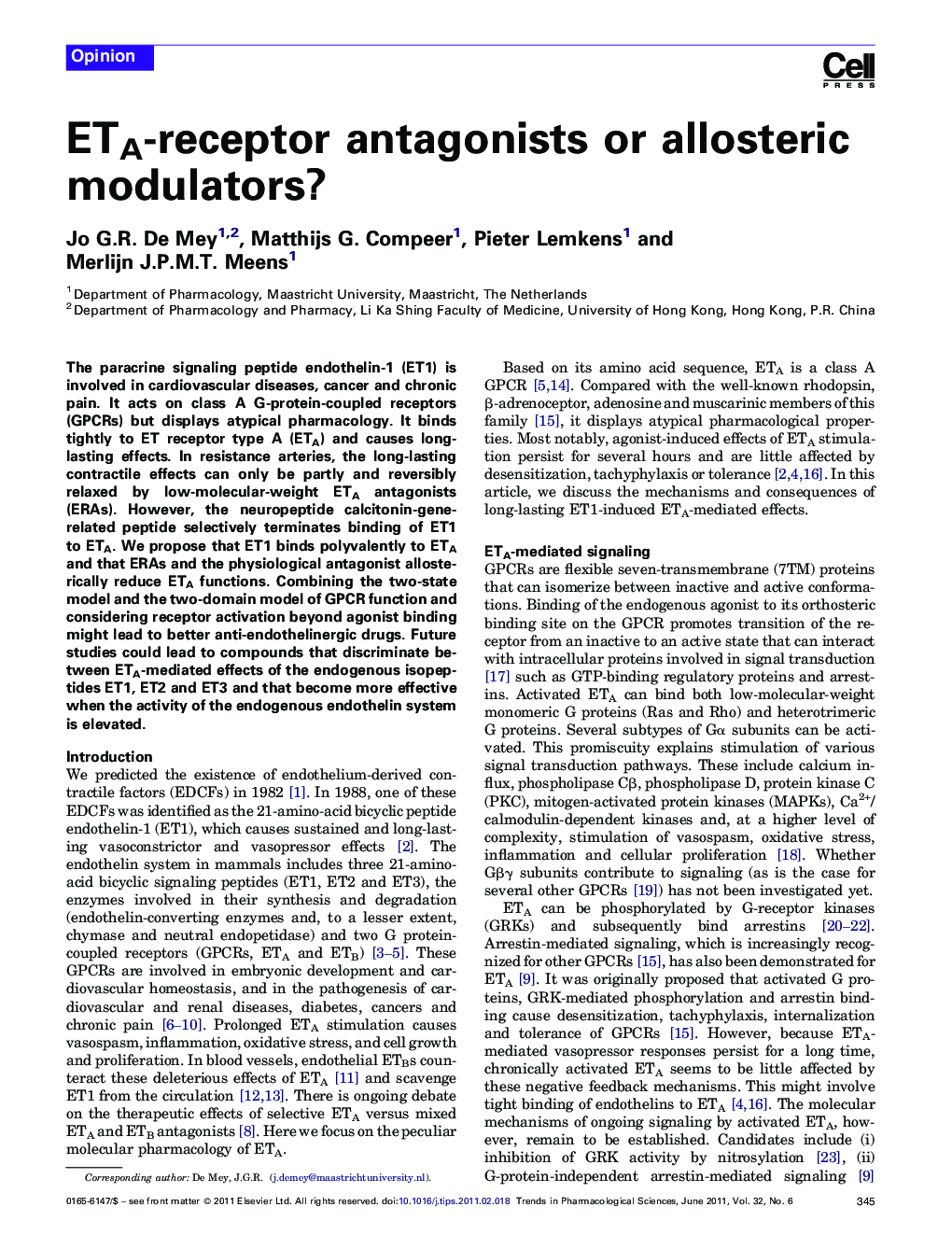| Article ID | Journal | Published Year | Pages | File Type |
|---|---|---|---|---|
| 2573140 | Trends in Pharmacological Sciences | 2011 | 7 Pages |
The paracrine signaling peptide endothelin-1 (ET1) is involved in cardiovascular diseases, cancer and chronic pain. It acts on class A G-protein-coupled receptors (GPCRs) but displays atypical pharmacology. It binds tightly to ET receptor type A (ETA) and causes long-lasting effects. In resistance arteries, the long-lasting contractile effects can only be partly and reversibly relaxed by low-molecular-weight ETA antagonists (ERAs). However, the neuropeptide calcitonin-gene-related peptide selectively terminates binding of ET1 to ETA. We propose that ET1 binds polyvalently to ETA and that ERAs and the physiological antagonist allosterically reduce ETA functions. Combining the two-state model and the two-domain model of GPCR function and considering receptor activation beyond agonist binding might lead to better anti-endothelinergic drugs. Future studies could lead to compounds that discriminate between ETA-mediated effects of the endogenous isopeptides ET1, ET2 and ET3 and that become more effective when the activity of the endogenous endothelin system is elevated.
